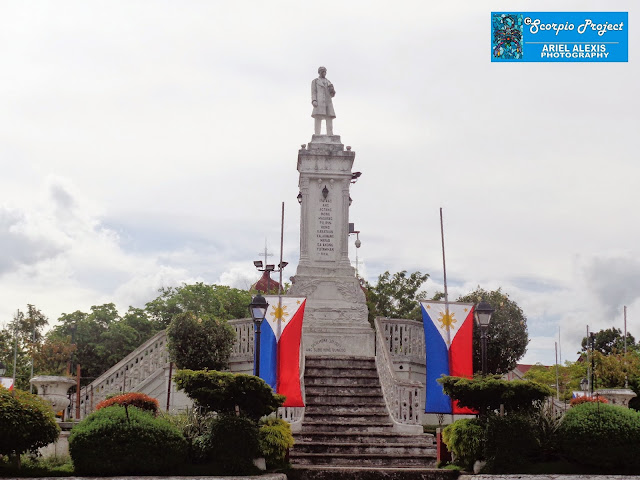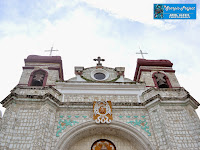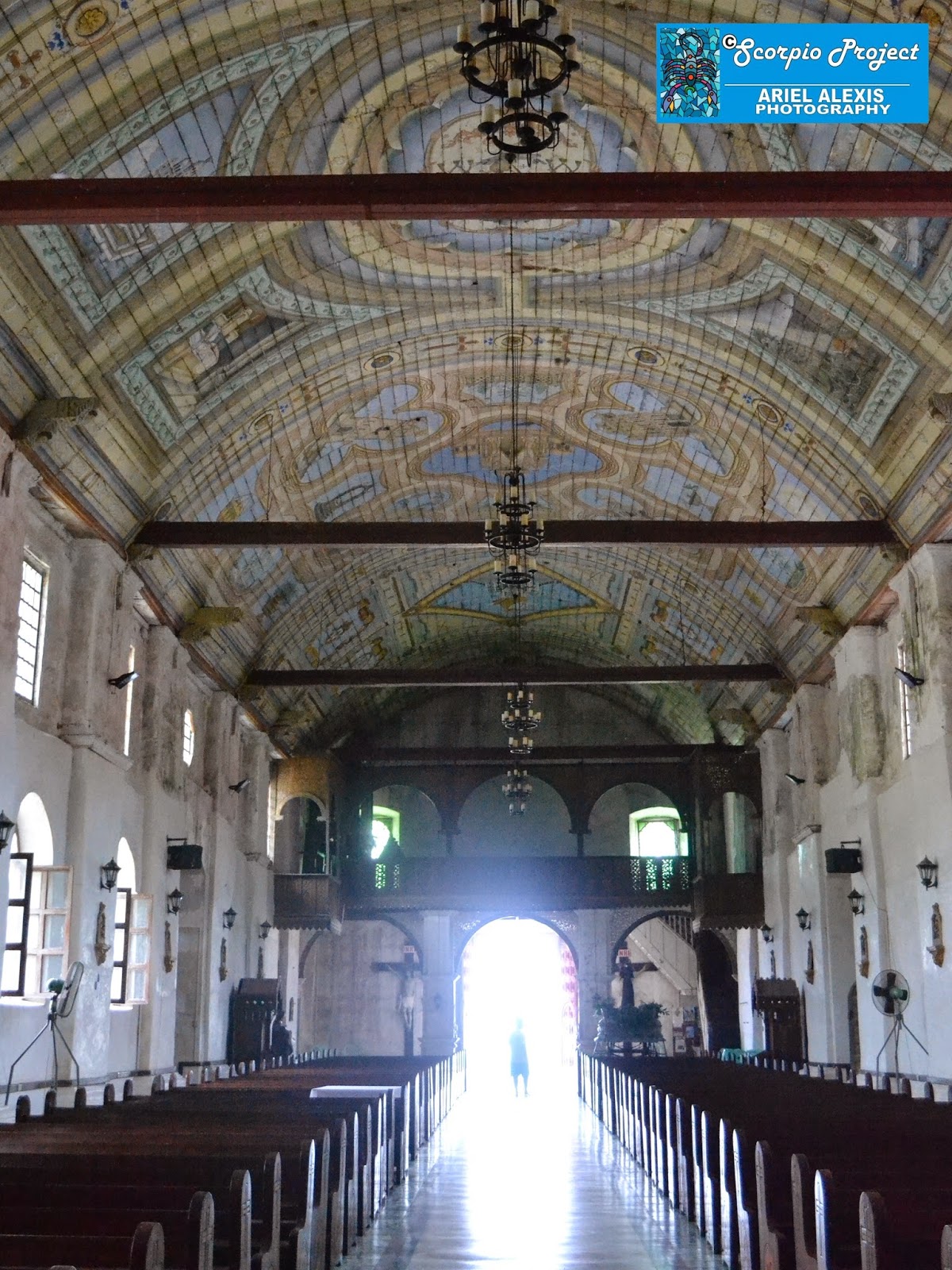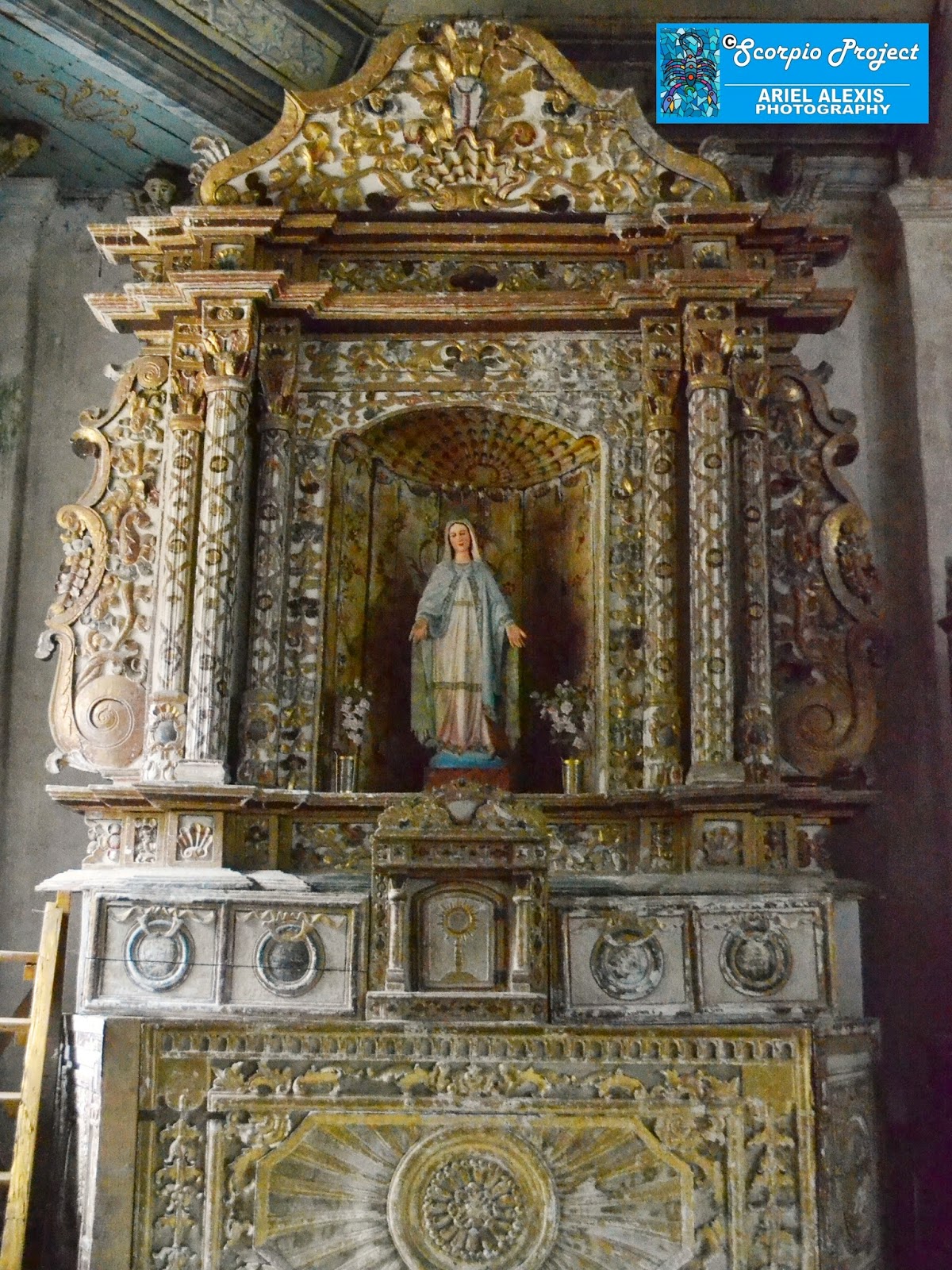From Boljoon, I moved on to the next leg of my heritage tour: historic Carcar. Exploring the newly-created city, I was surprised to learn that Carcar has its own share of centuries-old landmarks attesting to its historical, political and cultural significance in the province.

Founded in 1599, the seaside settlement was once called Sialo during pre-Hispanic times. When the colonizers came, Sialo was renamed to Valladolid. As it progressed, the town became the object of many Moro raids, forcing the villagers to relocate to another place called Kabkad.
 |
 Later on, this new settlement came to be known as Carcar,
after a small town in the province of Navarra in Spain. Today, the village of
Valladolid, where the city traces its humble beginnings, has become one of
Carcar’s hubs for its shoe-making industry.
Later on, this new settlement came to be known as Carcar,
after a small town in the province of Navarra in Spain. Today, the village of
Valladolid, where the city traces its humble beginnings, has become one of
Carcar’s hubs for its shoe-making industry. |
| Carcar Museum |
 These old structures—ancestral houses, government buildings, schools, churches, plazas, among others, dating back to the Spanish and American eras—are scattered in many parts of Cebu, but there are cities and towns like Carcar which have more than their fair share.
These old structures—ancestral houses, government buildings, schools, churches, plazas, among others, dating back to the Spanish and American eras—are scattered in many parts of Cebu, but there are cities and towns like Carcar which have more than their fair share. |
| Monument of Leon Kilat |

Going around the city, I noticed this life-size monument of a man riding astride a horse—Pantaleon “Leon Kilat” Villegas, a Cebuano revolutionary leader during the Philippine Revolution against Spain who was killed in Carcar in 1898.
For me, however, Carcar’s most iconic structure is its house of worship. Rising prominently on top of a hill overlooking the city, the beautiful Church of St. Catherine of Alexandria is raved about in many of the blogs I’ve read mainly because of its eclectic architectural design.
 Brimming with excitement, I headed towards the church,
said to be the second oldest in the entire province. It also counts among the
many notable period structures in Carcar that reinforce its reputation as one
of the most beautiful heritage cities in the country.
Brimming with excitement, I headed towards the church,
said to be the second oldest in the entire province. It also counts among the
many notable period structures in Carcar that reinforce its reputation as one
of the most beautiful heritage cities in the country.
 True to colonial tradition when Church and State were
deemed as one, the house of worship stands next to the public plaza and the
municipal hall. Beside it is a white two-storey structure that used to be the
dispensary, which now houses the city’s museum.
True to colonial tradition when Church and State were
deemed as one, the house of worship stands next to the public plaza and the
municipal hall. Beside it is a white two-storey structure that used to be the
dispensary, which now houses the city’s museum.
 Seen in pictures, the church’s facade looks ravishing.
Seeing it up close and personal, however, is simply awesome! Here’s a fine
structure that boasts of several architectural elements splendidly put
together—Roman buttresses and arch, Baroque pediment and Moorish-looking twin
belfries.
Seen in pictures, the church’s facade looks ravishing.
Seeing it up close and personal, however, is simply awesome! Here’s a fine
structure that boasts of several architectural elements splendidly put
together—Roman buttresses and arch, Baroque pediment and Moorish-looking twin
belfries.
 At first glance, the church, probably the only one in
Cebu with touches of Muslim architecture, called to mind some European churches
I’ve seen in pictures, particularly the Greek Orthodox cathedrals in Eastern
Europe and the churches inside the Kremlin in Moscow.
At first glance, the church, probably the only one in
Cebu with touches of Muslim architecture, called to mind some European churches
I’ve seen in pictures, particularly the Greek Orthodox cathedrals in Eastern
Europe and the churches inside the Kremlin in Moscow.
Its three-tiered whitewashed facade was done in Greco-Roman
tradition. Two huge and thick buttresses flank a massive recessed arch
resembling the iwan of a mosque,
which frames the main portal, where most of the simple artworks are
concentrated—floral bas-reliefs, a medallion and a niched icon of the Sto. Niño
de Cebu.

 At the pediment, a round window is surrounded with
bas-reliefs of three cherubs and a carved wreath. Flanking this pediment are
the most distinctive features of St. Catherine Church—the twin bell towers
topped by onion-shaped domes that reminded me of the minarets in the Middle
East.
At the pediment, a round window is surrounded with
bas-reliefs of three cherubs and a carved wreath. Flanking this pediment are
the most distinctive features of St. Catherine Church—the twin bell towers
topped by onion-shaped domes that reminded me of the minarets in the Middle
East.

 Surrounding the church is a fence of coral stone and
wrought iron. Standing on top of the fence’s pedestals are huge statues of the
eleven apostles of Christ that seem to beckon the faithful to enter this house
of prayer. The traitor, Judas Iscariot, I believe, was kept elsewhere. LOL!
Surrounding the church is a fence of coral stone and
wrought iron. Standing on top of the fence’s pedestals are huge statues of the
eleven apostles of Christ that seem to beckon the faithful to enter this house
of prayer. The traitor, Judas Iscariot, I believe, was kept elsewhere. LOL!
Once inside, this three-nave church, which was built by the Augustinians between 1860 to 1875, will definitely dazzle visitors. I was immediately drawn to its impressive woodwork, particularly the artesonado or coffered ceiling which resembles the one I saw inside the Shrine of Our Lady of the Assumption in Panglao Island in Bohol.
 Brimming with excitement, I headed towards the church,
said to be the second oldest in the entire province. It also counts among the
many notable period structures in Carcar that reinforce its reputation as one
of the most beautiful heritage cities in the country.
Brimming with excitement, I headed towards the church,
said to be the second oldest in the entire province. It also counts among the
many notable period structures in Carcar that reinforce its reputation as one
of the most beautiful heritage cities in the country.  True to colonial tradition when Church and State were
deemed as one, the house of worship stands next to the public plaza and the
municipal hall. Beside it is a white two-storey structure that used to be the
dispensary, which now houses the city’s museum.
True to colonial tradition when Church and State were
deemed as one, the house of worship stands next to the public plaza and the
municipal hall. Beside it is a white two-storey structure that used to be the
dispensary, which now houses the city’s museum.  Seen in pictures, the church’s facade looks ravishing.
Seeing it up close and personal, however, is simply awesome! Here’s a fine
structure that boasts of several architectural elements splendidly put
together—Roman buttresses and arch, Baroque pediment and Moorish-looking twin
belfries.
Seen in pictures, the church’s facade looks ravishing.
Seeing it up close and personal, however, is simply awesome! Here’s a fine
structure that boasts of several architectural elements splendidly put
together—Roman buttresses and arch, Baroque pediment and Moorish-looking twin
belfries. At first glance, the church, probably the only one in
Cebu with touches of Muslim architecture, called to mind some European churches
I’ve seen in pictures, particularly the Greek Orthodox cathedrals in Eastern
Europe and the churches inside the Kremlin in Moscow.
At first glance, the church, probably the only one in
Cebu with touches of Muslim architecture, called to mind some European churches
I’ve seen in pictures, particularly the Greek Orthodox cathedrals in Eastern
Europe and the churches inside the Kremlin in Moscow.
Topping the decorations at the recessed arch is an
elaborate seal of the Augustinian Order.

 At the pediment, a round window is surrounded with
bas-reliefs of three cherubs and a carved wreath. Flanking this pediment are
the most distinctive features of St. Catherine Church—the twin bell towers
topped by onion-shaped domes that reminded me of the minarets in the Middle
East.
At the pediment, a round window is surrounded with
bas-reliefs of three cherubs and a carved wreath. Flanking this pediment are
the most distinctive features of St. Catherine Church—the twin bell towers
topped by onion-shaped domes that reminded me of the minarets in the Middle
East. 
 Surrounding the church is a fence of coral stone and
wrought iron. Standing on top of the fence’s pedestals are huge statues of the
eleven apostles of Christ that seem to beckon the faithful to enter this house
of prayer. The traitor, Judas Iscariot, I believe, was kept elsewhere. LOL!
Surrounding the church is a fence of coral stone and
wrought iron. Standing on top of the fence’s pedestals are huge statues of the
eleven apostles of Christ that seem to beckon the faithful to enter this house
of prayer. The traitor, Judas Iscariot, I believe, was kept elsewhere. LOL!  |
Once inside, this three-nave church, which was built by the Augustinians between 1860 to 1875, will definitely dazzle visitors. I was immediately drawn to its impressive woodwork, particularly the artesonado or coffered ceiling which resembles the one I saw inside the Shrine of Our Lady of the Assumption in Panglao Island in Bohol.
 I wanted to linger in the church and take some snaps of
its interior but a wedding was about to begin so I had to limit my exploration
along the sidelines. Talk about perfect timing! Geez, it only meant one thing
for me: I need to stage a comeback.
I wanted to linger in the church and take some snaps of
its interior but a wedding was about to begin so I had to limit my exploration
along the sidelines. Talk about perfect timing! Geez, it only meant one thing
for me: I need to stage a comeback.  Looking around, one of the first things I noticed were
the two columns adorning the interior which featured the statues of angels
holding lampposts, all leading towards the sanctuary. Then, I shifted my gaze
towards the main retablo which, I heard, was done in Neoclassical fashion.
Looking around, one of the first things I noticed were
the two columns adorning the interior which featured the statues of angels
holding lampposts, all leading towards the sanctuary. Then, I shifted my gaze
towards the main retablo which, I heard, was done in Neoclassical fashion.  To my dismay, it was nowhere in sight! Instead, a huge
white drape covered that part of the church. OMG! What happened to the main retablo? From some of
the parishioners, I gathered that it was severely damaged, along with the left belfry, during the
2013 earthquake!
To my dismay, it was nowhere in sight! Instead, a huge
white drape covered that part of the church. OMG! What happened to the main retablo? From some of
the parishioners, I gathered that it was severely damaged, along with the left belfry, during the
2013 earthquake!  Whew, what a loss, I thought. Good thing, the whole structure didn’t give in. Otherwise, it would be a big blow to Carcar’s bid to be a hub of history, culture and arts in the province. Most of all, without its church, the city would be losing its soul and perhaps, its salvation.
Whew, what a loss, I thought. Good thing, the whole structure didn’t give in. Otherwise, it would be a big blow to Carcar’s bid to be a hub of history, culture and arts in the province. Most of all, without its church, the city would be losing its soul and perhaps, its salvation.
On my way out, I recalled a line from one of Emily
Dickinson’s poems. Sic transit gloria mundi. Thus passes the glory of the world. Ah,
the things here on earth are indeed fleeting. Nothing lasts forever. Even those
designed with the holiest of intentions.
 At present, officials are raising funds to rehabilitate
the main retablo and other damaged
portions of the church. Donations from those who want to help are most welcome
so that restoration work could proceed, a process which, I supposed, would be a
daunting one. But as long as the people of Carcar have a will, they’ll find a
way. :-D
At present, officials are raising funds to rehabilitate
the main retablo and other damaged
portions of the church. Donations from those who want to help are most welcome
so that restoration work could proceed, a process which, I supposed, would be a
daunting one. But as long as the people of Carcar have a will, they’ll find a
way. :-D(to be continued)
In coming up with
this anthology on Cebu’s heritage churches, I’ve referred to the following:


























































